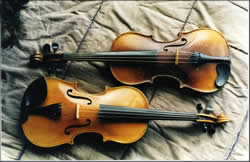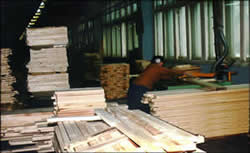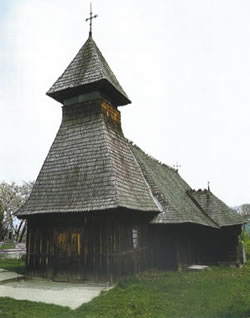
|
 |
Reghin
is located in the wide course of the Mures River, at the
confluence with the Gurghiu River, opening up in an amphitheatre
shape on the western bank of the Mures River. The surface
of the town has extended in time through the valley situated
on the left bank.
In the municipality of Reghin,
vestiges of multi-level settlements dating from the Neolithic
were discovered - stone axes, ceramic fragments - as well
as vestiges dating from the Bronze Age and from the Geto-Dacian
Age. A roman coin collection and the vestiges of a mud
castle dating from the 8th-9th century were also discovered.
Starting with the 12th century, Reghin and its surrounding
areas were colonized by the Saxons, and the town is mentioned
in 1228 under the name of Regun. The coexistence with
the Saxons coming from the Rhin valley brought along deep
changes in the life and future of the settlement. Although
it was plundered several times, it recovered each time,
becoming even stronger. In 1300, the town was the capital
of a religious deanery, and in 1332 it was the meeting
place of the Catholic clerics.
In 1427 it was known as
a borough - oppidum Regen, and in the 16th century it
became a handicraft center. |
 |
Due
to the construction of the Târgu Mures - Reghin
railroad in 1885, and then another one on the route to
Deda, Reghin underwent a remarkable development. In 1853,
in Reghin, a rafting commercial company, with connections
to Mures and Gurghiu, was opened, followed by timber factories
operating on mechanical drive. |
 |
In
November 1994 Reghin was declared a municipality. It is
now an important economic center as well as a strong cultural
center that influences the entire hill and mountain area
of the county. It has an electrical heating power station,
wood and construction materials industrial units. It stands
out due to the fact that it produces musical instruments,
boats, sport equipment, chipboards, furniture, shoes,
milk powder, beer and fruit juice. It is an important
fruit-growing center.
Reghin also has a natural
sciences and an ethnographic museum, with an impressive
collection of painted Easter eggs. The Reghin library
has a remarkable collection of books, an inheritance of
its cultural-historical life, a wide collection of old
and rare books, as well as collections of modern books,
ranging from literature to technical books.
|
 |
As
far as tourism is concerned, Reghin is very well represented.
The Evangelical Church, whose construction started in
1300, as a Roman church, and ended in 1330, featuring
several gothic changes from the 16th and 18th century,
has a 47 m tower featuring a 19th century clock. The parish
house dates from 1670. The Orthodox Church "Sfântul
Nicolae", built in 1744, with its paintings in a
popular style and its religious icons, the Roman Catholic
Church, built in 1781 in a late baroque style, repainted
in 1968; the reformed Church; the Orthodox Church "Sfânta
Treime", built by Petru Maior and finished in 1811;
the statue of Petru Maior, who lived in Reghin, Luppa
Capitolina raised 1994, all can be visited here. A 15th
century castle, rebuilt in the 19th century, built in
the Renaissance style, with baroque elements, in the middle
of a park filled with very rare trees, can be found in
Apalina, as well as a Roman Catholic Church. In the Iernuteni
neighborhood there is the "Adormirea Maicii Domnului"
Orthodox Church sanctified on the 20th of August 1995
by His Beatitude Teoctist, Patriarch of the Orthodox Church
of Romania. In the center of the town, a memorial plaque
for Richard Wagner, former head of the Berlin Conservatory,
born in Reghin in 1903, was inaugurated. This is also
the birthplace of Augustin Maior, (1882-1964) inventor
of the multiple telephony - "Telegraphy, high frequency
multiple telephony" ("Telegrafie, telefonie
multipla cu inalta frecventa"). "Padurea Rotunda",
a very popular leisure place, can also be found in the
vicinity of the town. |
|
|
|

